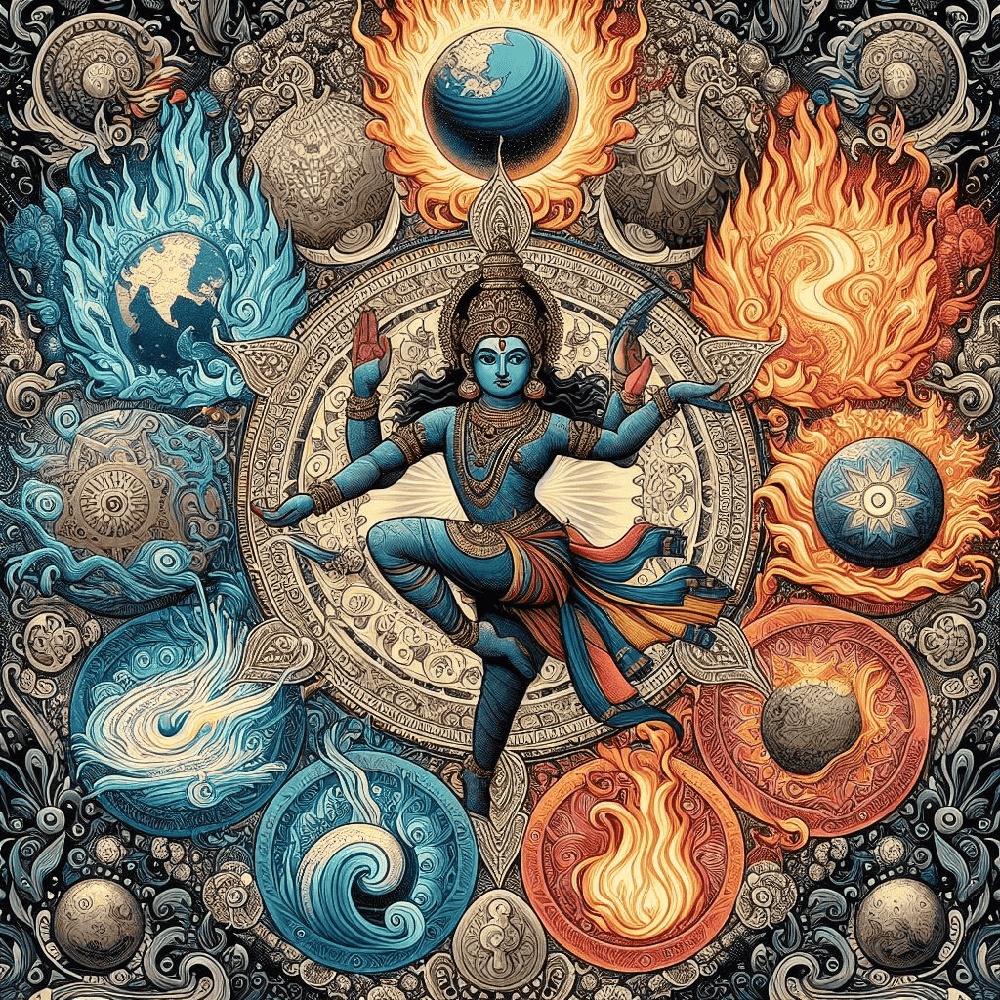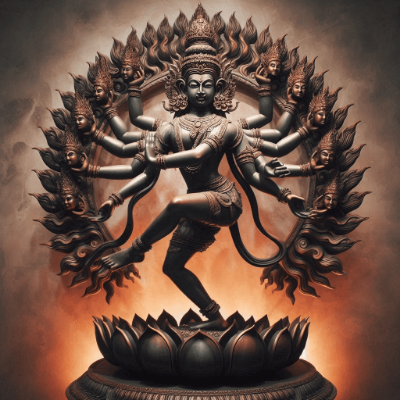Natraj Shiva
By Diptimayee parida | bangalore August 12, 2017
In many museums, temples, restaurants, and esoteric shops, we see the dancing figure of Lord Shiva within a circle of fire, known as the "Shiva Nataraja," Lord of the Dance. In his appearance as Nataraja, he shows his triple role as creator, preserver, and destroyer. Shiva in this figure first appeared in Indian stone temple sculpture in the 5th and 6th centuries CE. The god is shown dancing within a prabhamandala (flaming halo), which represents time and is depicted as a circle to symbolize the Hindu belief that time is both cyclical and without end.

The dance form performed in the Nataraja image is "Tandava," the cosmic dance. The energy and wildness of the dance are shown in his bent knees and the extravagant spreading of the god's hair. Shiva provides his own music, as in his upper right hand, he holds a small damru, which provides rhythm and the first sounds of creation. In his left hand, he holds Agni, the supreme fire, which will destroy the world. His lower right hand makes the abhaya mudra gesture, which calms all fear, and his lower left arm sweeps across his torso with the hand pointing to his left foot in the gesture of gaja hasta, meaning salvation and liberation. Shiva's right foot stands upon the demon "Apasmara," the embodiment of ignorance. The cobra around Nataraja's waist is Kundalini Shakti, the soul-impelling cosmic power resident within all.

The Nataraja dance is not just a symbol; it takes place within each of us at the atomic level. Thus, Lord Shiva, in the form of Nataraja, clears ignorance from our minds through the supreme act of dance. It is a message that ignorance can only be overcome by knowledge, music, and dance.
 inspired by Nataraja.png)
Conclusion:
As we conclude our exploration of Nataraja, we're reminded of the profound significance of this iconic image in Hindu mythology. May his cosmic dance inspire us to find balance and harmony in our own lives.
Let the cosmic dance of Nataraja inspire you to find balance and harmony in your life. Share your thoughts and reflections on the significance of Nataraja, and let's explore the depths of Hindu mythology together.



